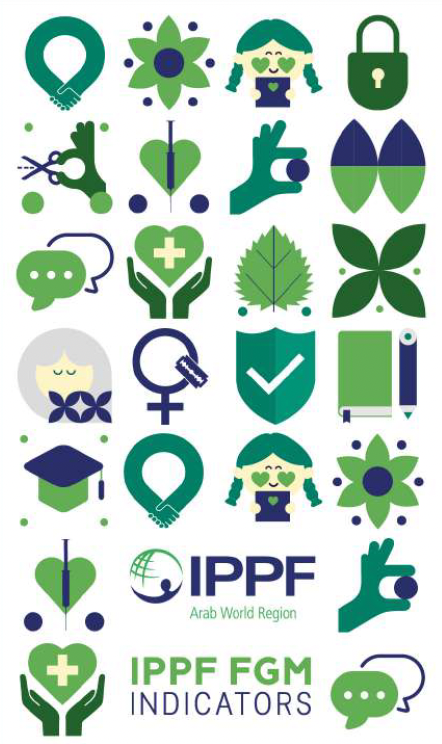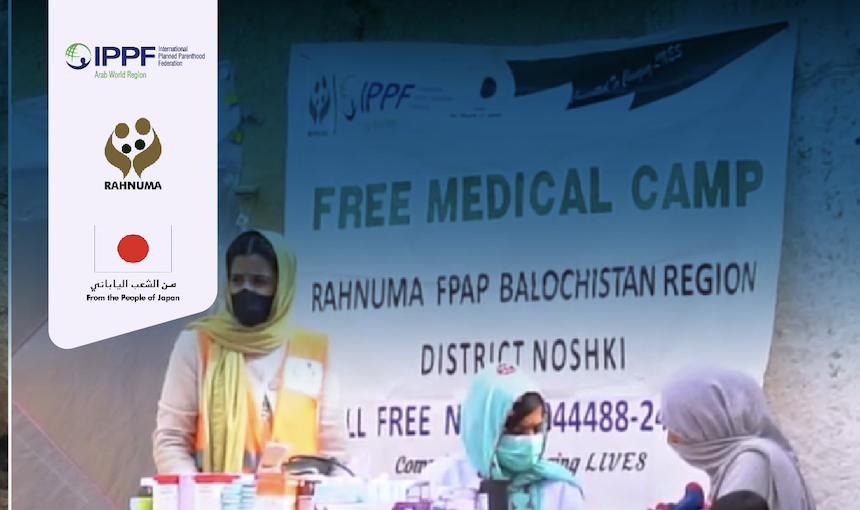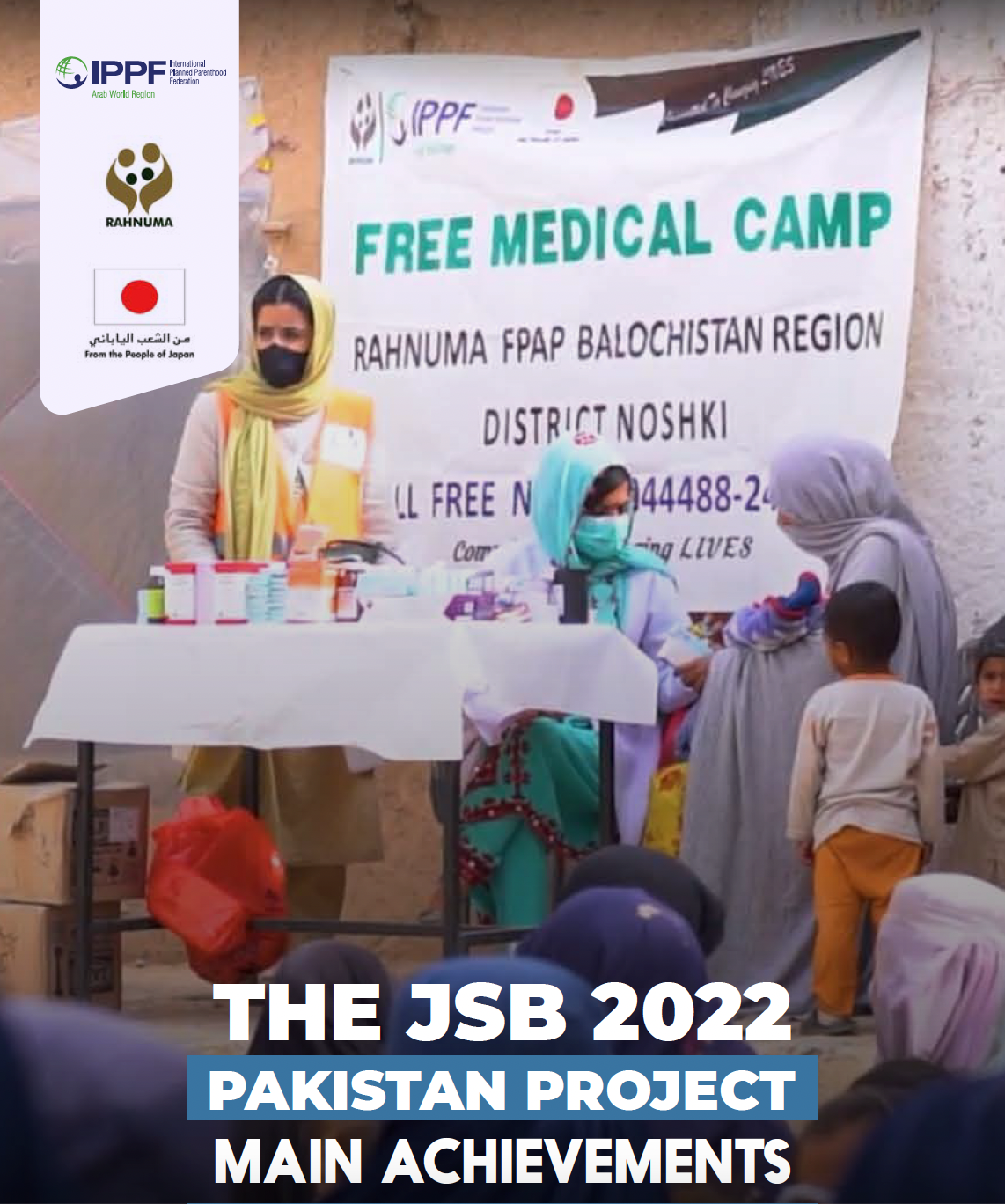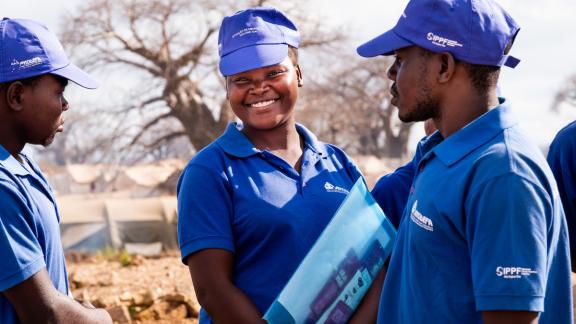Filter our resources by:


| 16 October 2024
The impact of natural disasters on women and children in Pakistan
🌍 Addressing the Impact of Natural Disasters on Women and Children in Pakistan 🌧️ In the wake of the devastating floods in Pakistan, countless lives have been affected, especially among vulnerable populations. This powerful video sheds light on the ongoing efforts of the RAHNUMA - Family Planning Association of Pakistan, supported by the Japanese supplementary budget through the International Planned Parenthood Federation- Arab World Region . 👩⚕️ RAHNUMA has been a beacon of hope, providing essential sexual and reproductive health services to women and girls impacted by these disasters. Through medical camps, training sessions, and the provision of safe delivery kits, we have worked tirelessly to address the urgent needs of those affected. ✨ Key Highlights from the Video: Over 80% of Afghan refugees received medical care. Safe delivery kits were distributed to pregnant women, ensuring maternal and child safety. Hygiene kits and awareness sessions were conducted to empower women to tackle reproductive health issues. Women-friendly spaces were established to address gender-based violence and provide mental health support. 🤝 We extend our heartfelt gratitude to the Government of Japan and its people for their generous support during these challenging times. Your contributions have made a significant difference in the lives of those affected by the floods. Together, we can amplify the unheard voices of those in need. Join us in advocating for sexual and reproductive health services for women and children in Pakistan. 📽️ Watch the full video to see the impact of our work and the resilience of the communities we serve.

| 11 September 2024
Game-Changer Alert: New FGM Indicators & Resources from IPPF awr!
🚀 Game-Changer Alert: New FGM Indicators & Resources from IPPF awr! 🚀 🔥 Exciting News! 🔥 IPPF’s FGM Centre of Excellence in Mauritania has unveiled powerful new tools to combat FGM! These indicators are a game-changer for our Member Associations (MAs) working in high-prevalence areas. Check out the highlights: 📚 Hot Off the Press: 1. FGM Theory of Change– Our strategic roadmap for eradication. 2. Success Stories Booklet – The Veiled Truth: Restoring Abandoned Souls – Heartfelt stories of transformation. 3. Framework to Accelerate FGM Elimination – A strategic guide for rapid action. ✨ What’s Coming Next: Framework Indicators Guidance. 🌍 Why These Indicators Matter: - For MAs: Craft stronger, data-driven proposals and amplify your advocacy! - For IPPF: Elevate our global presence within the UNICEF-managed FGM cluster and enhance comprehensive sexuality education (CSE). 💡Spotlight on Indicators: - 🌐 Partnerships: Track your network and impact! - 📢 Advocacy: Measure the power of public statements and successful policy changes. - 🩺 Services: Quantify the reach of FGM-related services. - 🎓 Social Change: Evaluate CSE coverage and peer educator training. 💪 Join us in driving change and building a world free from FGM. Together, we’re unstoppable!

| 11 September 2024
Accelerating the Elimination of Female Genital Mutilation: A Comprehensive Framework
Accelerating the Elimination of Female Genital Mutilation: A Comprehensive Framework 🌟 The International Planned Parenthood Federation (IPPF) is spearheading a crucial initiative to combat Female Genital Mutilation (FGM) through its innovative Framework to Accelerate the Elimination of FGM. This framework is designed to address and eradicate this harmful practice, which remains a severe violation of human rights and a form of gender-based violence. 🔍 Understanding FGM: FGM encompasses various procedures involving partial or total removal of the external female genitalia or other injury to the female genital organs for non-medical reasons. It's a practice deeply rooted in certain cultures and traditions, but it inflicts severe physical, psychological, and emotional harm. The IPPF's work targets this practice by tackling misconceptions and advocating for the rights and well-being of girls and women. 🚀 Moving Forward: The IPPF's Center of Excellence will lead these efforts, expanding to new regions and enhancing existing programs. By combining research, advocacy, and community engagement, we aim to create a world where all girls and women live free from the harm of FGM. ✍Join Us in This Critical Mission: We invite all stakeholders, from policymakers and activists to community leaders and healthcare providers, to support this transformative framework. Together, we can accelerate the elimination of FGM and ensure a future where every girl and woman thrives in safety and dignity. 📥 Download the Full Framework: .....

| 02 September 2024
Announcing Our Impact: JSB 2022 Pakistan Project Fact Sheet
📣 Announcing Our Impact: JSB 2022 Pakistan Project Fact Sheet 🚀 We’re thrilled to unveil the remarkable achievements of the JSB 2022 Project in Pakistan! Dive into our fact sheet and explore how we've been championing the Sexual and Reproductive Health (SRH) needs of Afghan women refugees in the flood-affected regions of Balochistan and Khyber Pakhtunkhwa. 🌍 Highlights of Our Impact: - Meeting Critical Needs: Targeted support for Afghan women refugees in the most affected, flood-stricken areas. - Regional Transformation: Groundbreaking interventions making waves in Balochistan and Khyber Pakhtunkhwa. 🌐 Available in Multiple Languages! The report is available for download in both Arabic and English. 📥 Get Your Copy Now: Be among the first to uncover this essential publication and see how we’re driving change for vulnerable populations across the World. Celebrate our journey with us and stay tuned for more updates on our transformative work!

| 26 August 2024
Achievements of the JSB 2022 Project in Pakistan
🚀 Unveiling Our Latest Impact: The JSB 2022 Pakistan Project 🌟 We are thrilled to share the remarkable achievements of the JSB 2022 Project in Pakistan! This report highlights our dedicated efforts to meet the Sexual and Reproductive Health (SRH) needs of Afghan women refugees in flood-affected regions of Balochistan and Khyber Pakhtunkhwa. 🌍 Key Achievements: - Addressing Critical SRH Needs: Focused support for Afghan women refugees in high-need, flood-impacted districts. - Regional Impact: Transformative interventions in Balochistan and Khyber Pakhtunkhwa. 🌐 Available in Multiple Languages! The report is available for download in both Arabic and English.

| 22 August 2024
Sexual and reproductive health and sexual and gender-based violence projects in humanitarian settings
🌍 New Report Alert! We are excited to announce the release of our comprehensive report on sexual and reproductive health, as well as sexual and gender-based violence (SGBV) projects in humanitarian settings. This report highlights the impactful work of the International Planned Parenthood Federation Arab World Region, with the support of the Government of Japan. 📄 What's Inside? The report delves into the critical projects implemented in Lebanon, Mauritania, Palestine, Pakistan, and Yemen. It showcases the resilience and dedication of our Member Associations in addressing sexual and reproductive health needs and combating SGBV in some of the most challenging environments. 🌐 Available in Multiple Languages! This report is available for download in Arabic, French, English, and Japanese. 💪 Why It Matters? In humanitarian crises, the need for sexual and reproductive health services is often overlooked. This report sheds light on our efforts to ensure that these essential services reach those who need them most, helping to protect the health and rights of women and communities in conflict and post-conflict settings. Let's spread the word and continue our mission to make sexual and reproductive health a reality for all, even in the toughest situations.









